Lake Superior ciscoe spawning and winter ecology
Contributing Authors
Mark Vinson (USGS, mvinson@usgs.gov), Ian Harding (Red Cliff Band of Lake Superior Chippewa), Jamie Dobosenski (TNC), Dray Carl (WIDNR), Amanda Ackiss (USGS), Dan Yule (USGS)
Project Description
This proposal expands on our recent work collecting ciscoes in winter near Grand Island, Michigan. This previous Coregonine Restoration Program funded project started the process of gathering data necessary to base Kiyi (Coregonus kiyi) restoration management decisions by learning where and when contemporary Kiyi spawn, what their reproductive potential is, and if collecting sexually mature Kiyi is feasible (Vinson et al. 2022).
This project will expand on this earlier work by attempting to collect spawning Kiyi and other ciscoes in a different location, the Apostle Islands, and over a longer range of dates. The work near Grand Island, Michigan collected Kiyi from November through mid-January. We propose to collect ciscoes from November through March.
We will opportunistically make use of these collections in two ways. First, we will seek to describe the winter diets of Bloater, Cisco, Kiyi, and potentially other rare species, such as Blackfin, Shortjaw, and Shortnose, something that has not been previously done. This information could prove as insightful as the study of winter Lake Superior Lake Whitefish, where it was unexpectedly found that Lake Whitefish consumption of recently spawned Cisco eggs throughout the winter represented 34% of annual and 79% of winter energy consumption, and that Lake Whitefish condition increased during the winter (Stockwell et al. 2014). Second, we will seek to describe spawning timing and fecundity of Bloater, Cisco, Kiyi, and potentially other rare species, such as Blackfin, Shortjaw, and Shortnose.
